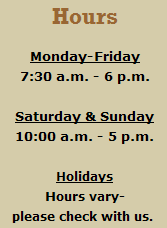CLICKER TRAINING
When introduced to clicker training, pet owners and handlers are often relieved by the apparent simplicity of the training. Watch for the behavior you want. Click when the behavior is occurring. Treat within one second.
Hands become stuck in pockets, treats drop, the clicker is moved from one hand to the other, we try to click and treat with the same hand….Sound familiar? If so, or if you’re new to clicker training and haven’t experienced this feeling of disarray, it’s time to learn the ‘mechanical’ skills that will make training run smoothly.
Learning these key skills will improve your ability to communicate clearly. Sharpening your timing of the click and the delivery of the reward will improve clarity and speed up learning. Just as learning any new skill, devoting the time necessary to teach your own body the ‘muscle memory’ it needs to act deliberately and with finesse, can turn one’s training from mediocre to outstanding.
One of the first considerations will be where and how to hold the clicker. Begin by deciding which hand you will use to hold the clicker. Consider where that will be held during training. Many trainers leave their clicking hand resting directly against their side. Some keep it hidden behind their back or resting above the belt line. This helps to limit movement, which can distract and confuse the animal. Work to eliminate inadvertent visual cues.
Once comfortable with where and how you’re holding the clicker, move on to honing observational skills. Begin by choosing what behavior you will mark, then watch the animal closely for any signs of the behavior occurring. Click as the behavior is occurring, not after it’s completed. This takes practice and a fine eye for detail.
Here’s how the sequence should flow: The moment the animal begins to offer the behavior you’re seeking, CLICK! The click acts as an event marker for the desired behavior and bridges the time between the behavior and the reward. Click only once for each correct behavior offered.
The click lets your animal know it has completed the task successfully and a reward is coming. If you make the mistake of inadvertently clicking, be sure to still follow with a treat or other reinforces. One click equals one treat. The rate of reward may be very high in the beginning and that’s fine (15- 20 clicks per minute). This is where practice becomes necessary.
It’s important that the rewards come predictably; within 1-2 seconds of the click. Be sure they are separate though. Vary the reinforcement (for dogs a mix of cheese, kibble, meat ends- for horses hay pellets, peppermints, carrot bits). And treat harder jobs with more valuable rewards. Dry kibble may work for some dogs some of the time, but often not when distracted or stressed. Be creative. Cheerio’s, cat kibble, cooked macaroni are low value rewards. When the task is mentally or physically challenging, try bits of cheese, chicken, hamburger, crumbled bacon or egg for higher value rewards. The smell alone is often enough to get your dog motivated!
You may now have a better understanding of the importance of manual dexterity, being a keen observer, and reinforcing predictably. The next consideration is ‘timing’. Good timing is crucial in clicker training. The opportune moment to treat is within 1-2 seconds of the click. Though the sequence may be rapid, it is also precise. Always remember, the click is distinctly separate from the treat. When practicing the click/treat sequence, keep your hands at home base (mine is right in front of my navel) and take care not to move your hands prematurely. This distracts the animal from the task at hand.
Do you have different experience or tips?
SHARE WITH OUR READERS!!!!























0 comments:
Post a Comment